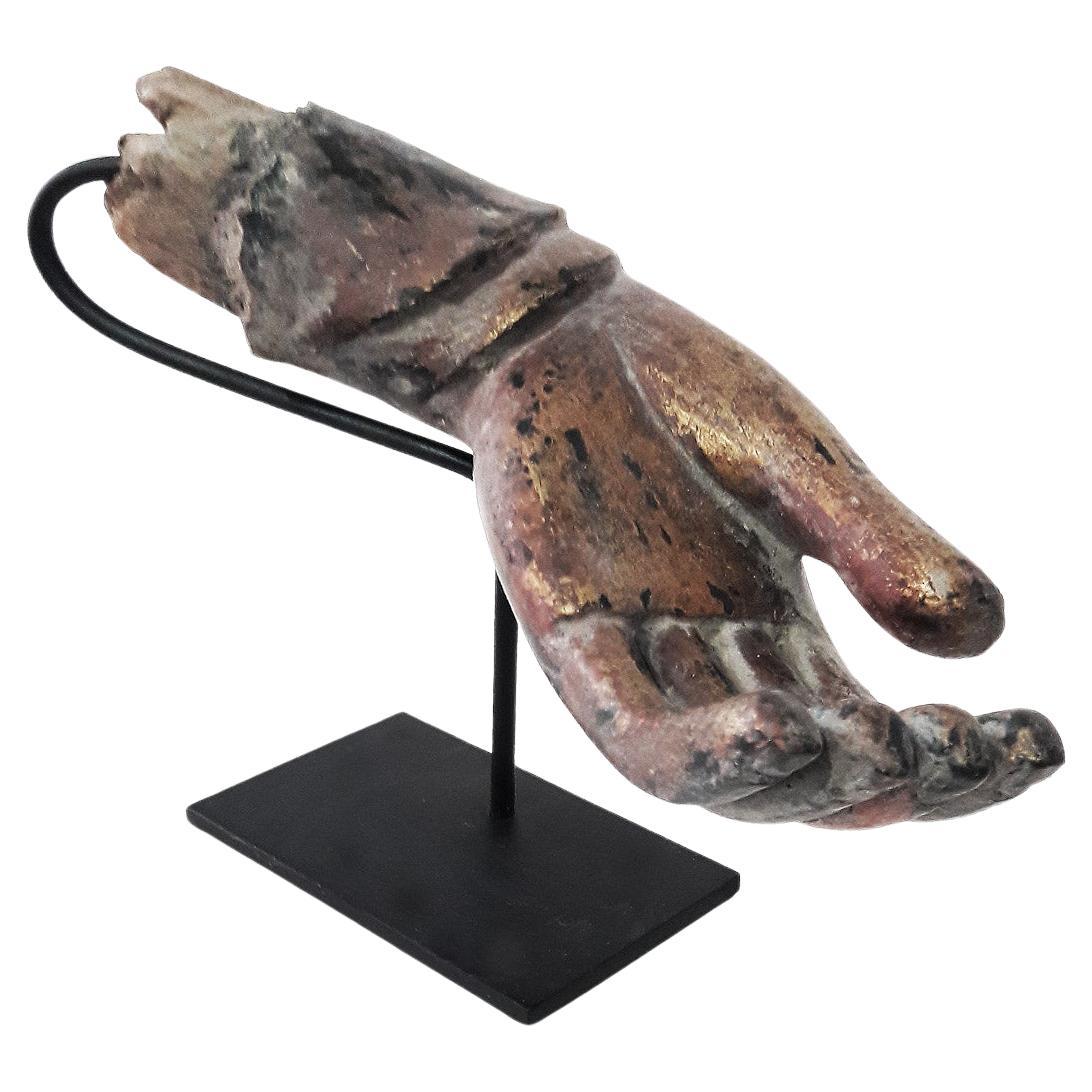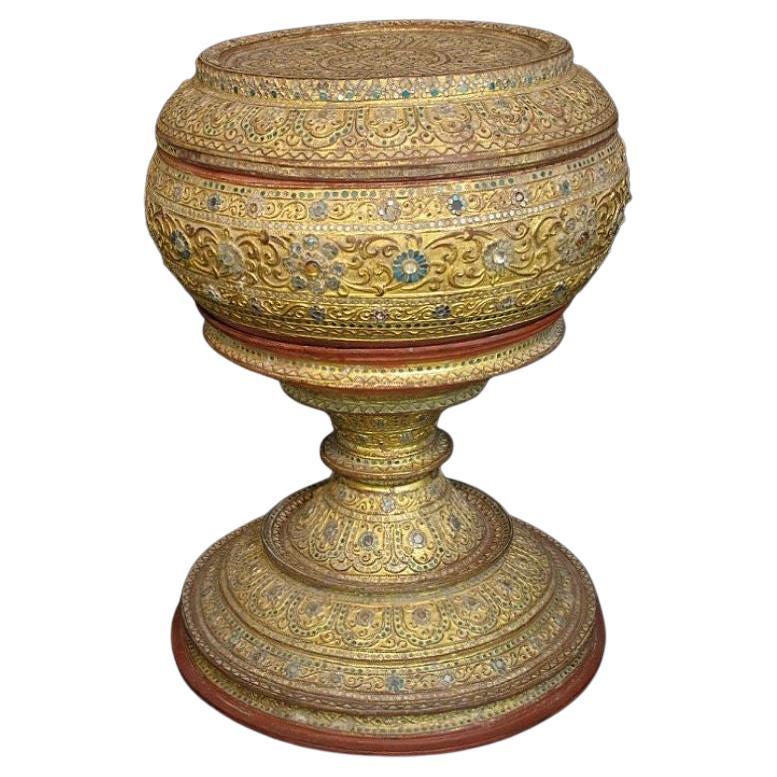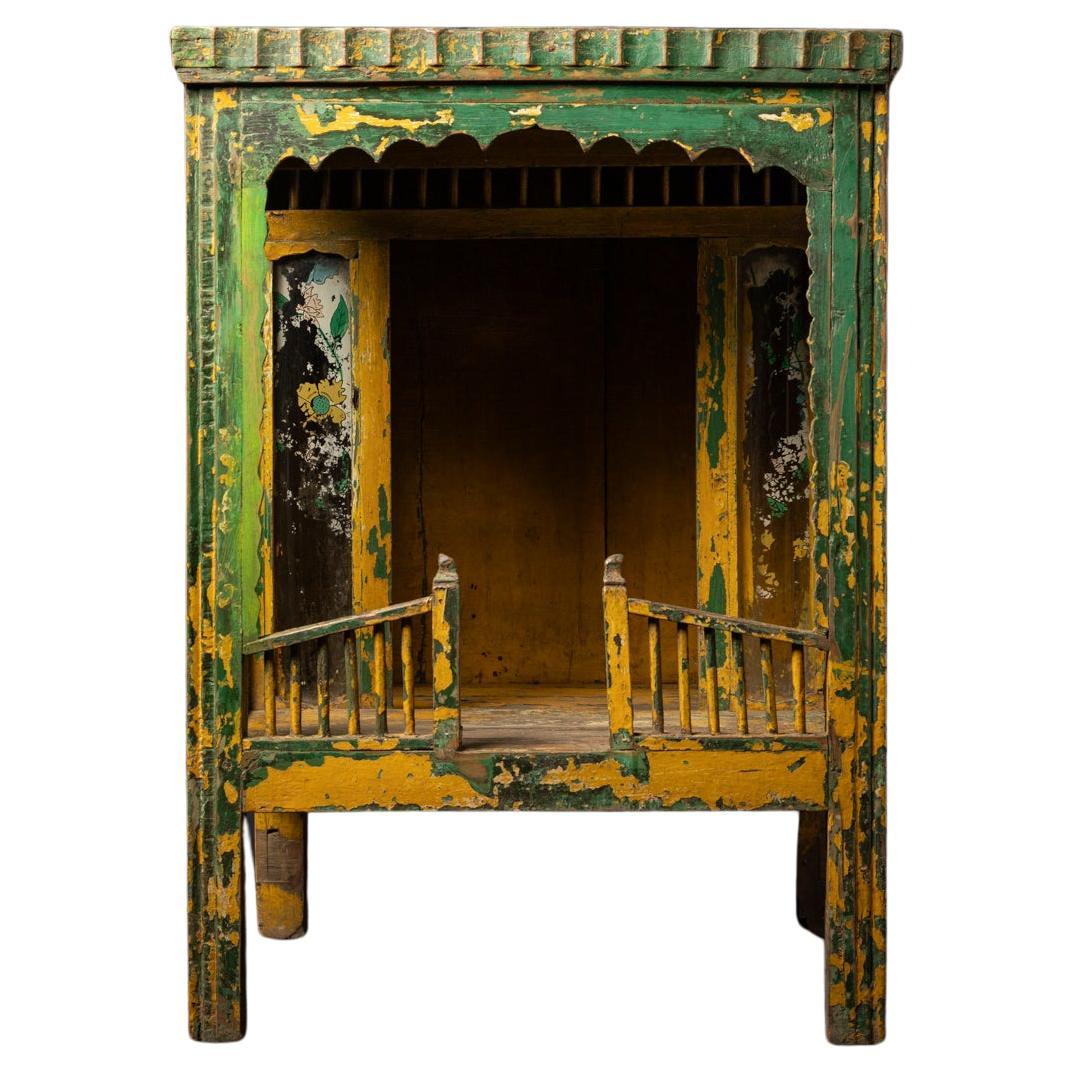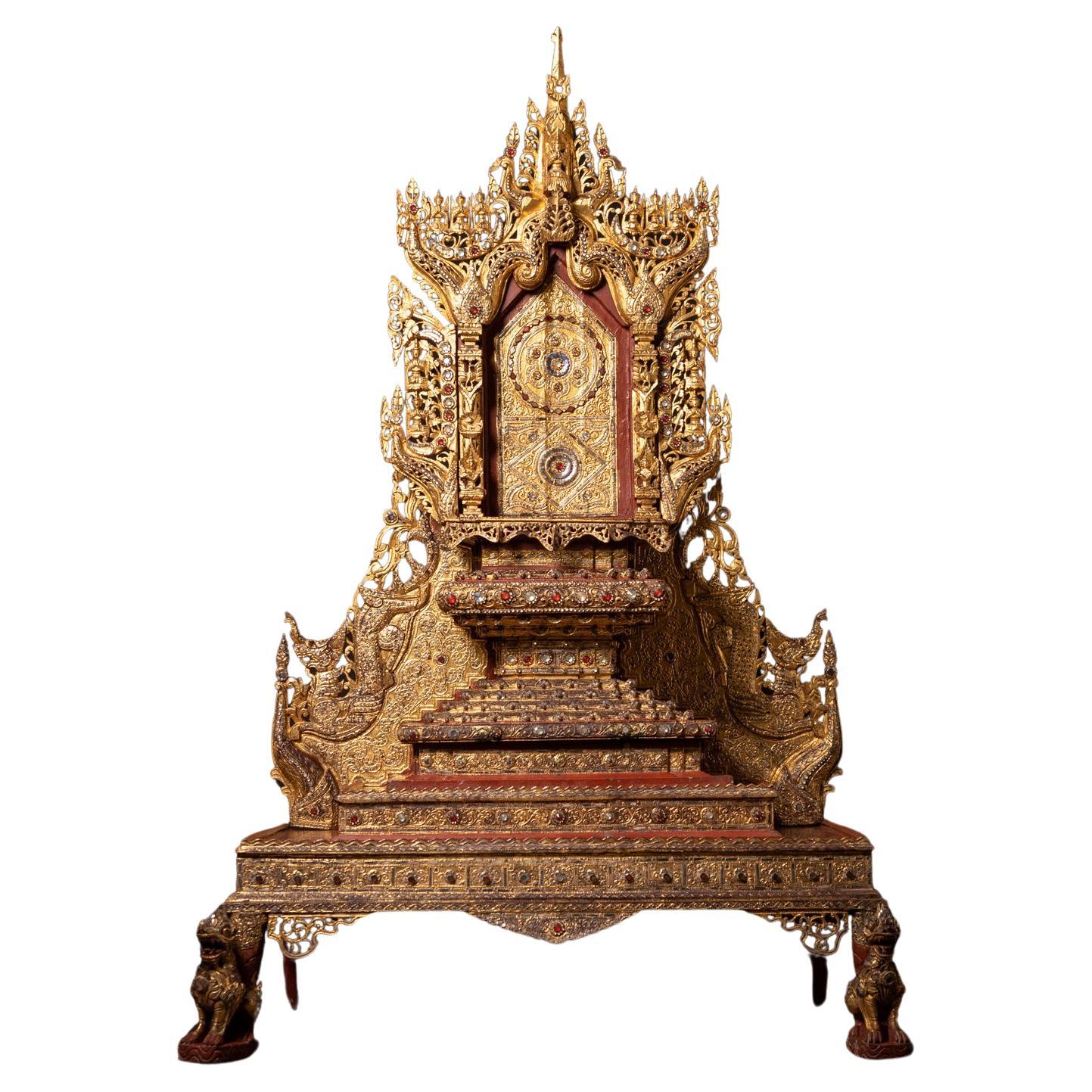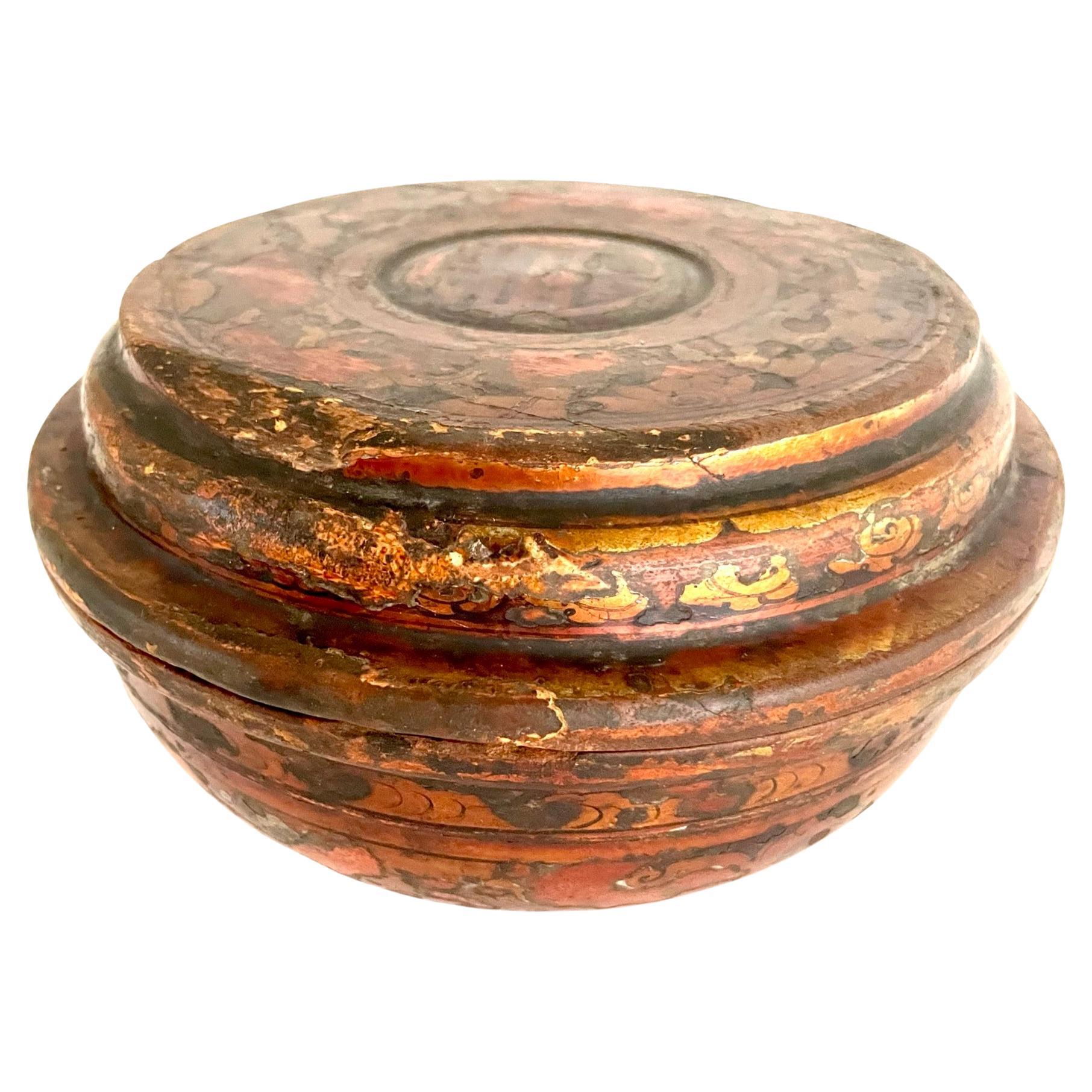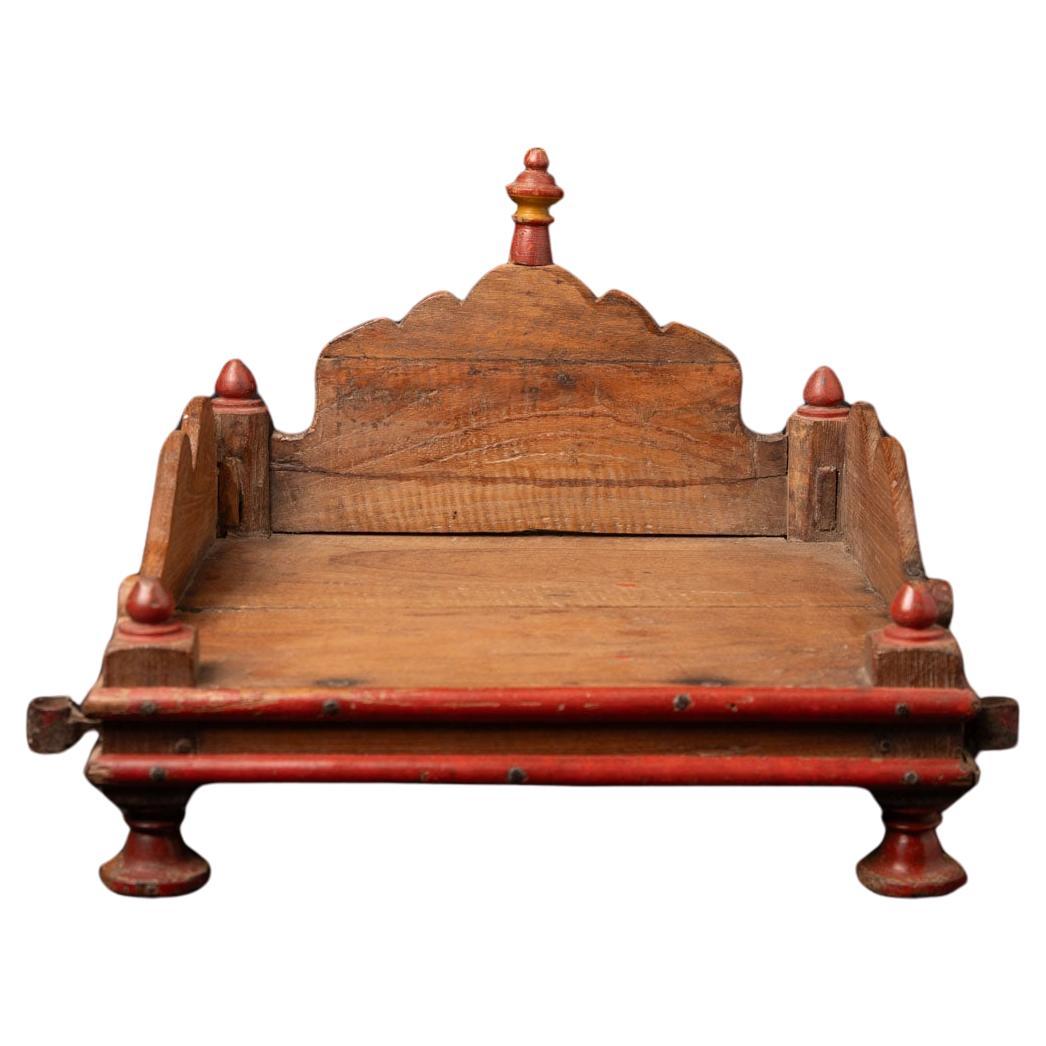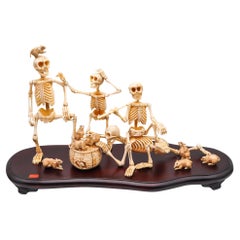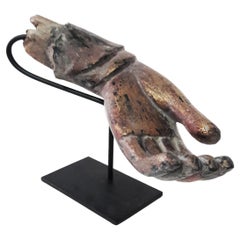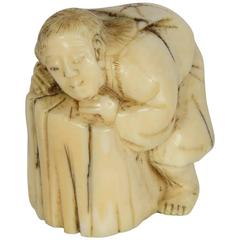
19th Century Japanese Okimono
View Similar Items
1 of 8
19th Century Japanese Okimono
About the Item
You May Also LikeView All
- Japan 1890 Meiji Period Signed Assembling of Okimono with a Group of SkeletonsLocated in Miami, FLA signed Okimono from the Japanese Meiji period (1868-1912). Very rare, unusual and large sculptural assembling of a dysplaying piece of okimono. Created in Japan during the imperial period of the Meiji (1868-1912). This extraordinary piece okimono sculpture depict a group of four intricately and realistically rendered carousing males skeletons representations (Gaikotsu) standing in several position. One skeleton is crouched down playing with mouses in the floor. The second is seated resting in the other's back, peacefully smoking opium. The others two are fully standing in interacting position. The entire composition is arranged freely displayed on the wood base including a woven basket, apparently with food and four playfull mouses. There are an extra five mouses in different positions, freely playing around, all of them with the eyes accented with carved black ebony. The composition is displayed on a four-legged free form carved wood platform with an inlaid red plaque engraved with the artist's signature. The level of detail and the quality of the carving is truly exceptional. Has an exact measurements of 216.15 mm by 139.7 mm by 359.41 mm (8.51 x 5.5 x 14.15 Inches). After an extensive collection of data, comparables and references to this piece, we have only been able to find only three okimono sculptures like this, with similar themes and the same quality of work. References Note: A similar carving of four skeletons playing an animated game of dominos, signed Shutaro in an inlaid rectangular red plaque, was sold in London by Christie’s South Kensington in October 14 2014, Lot 120 Sale 5546. References Note: A similar carving with four skeletons in an otherwise typical victorian scene of a photographer and three sitters signed Shutaro in an inlaid rectangular red plaque, was sold in Edinburgh at Lyon & Turnbull in November 7, 2018. References Note: A similar carving with five skeletons seated, playing cards and drinking, was sold in London by John Nicholson Fine Art on September 26, 2018. Meiji period, is an era of Japanese history that extended from October 23, 1868 to July 30, 1912.The Meiji era was the first half of the Empire of Japan, when the Japanese people moved from being an isolated feudal society at risk of colonization by Western powers to the new paradigm of a modern, industrialized nation state and emergent great power, influenced by Western scientific, technological, philosophical, political, legal, and aesthetic ideas. As a result of such wholesale adoption of radically different ideas, the changes to Japan were profound, and affected its social structure, internal politics, economy, military, and foreign relations. The period corresponded to the reign of Emperor Meiji. It was preceded by the Keio era and was succeeded by the Taisho era, upon the accession of Emperor Taisho. Okimono, is a Japanese term meaning for display an ornament; art object; or decorative object, usually displayed in a tokonoma or butsudan "Buddhist altar". It is an ornament or figure, especially one placed in a guest room. An okimono may be a small Japanese carving...Category
Antique 1890s Japanese Meiji Sculptures and Carvings
MaterialsWood
- 19th Century Painted Wooden Tibetan BowlLocated in Atlanta, GAA beautiful late 19th century paint bowl with a lid that was once used for storing the famous Tibetan barley flour (Tsampa). These bowls were used by the Buddhist mountain people of ...Category
Antique Late 19th Century Tibetan Sculptures and Carvings
MaterialsWood, Lacquer, Paint
- Mid 19th Century Buddha Hand on a StandLocated in New York, NYOnce an original part of a Mid-19th Century Buddha wood sculpture from Thailand, this reclaimed hand fragment is lacquered in black and gold, showing the...Category
Antique 1830s Thai Other Sculptures and Carvings
MaterialsWood
- 19th Century, Wooden Mandalay Buddha from BurmaLocated in DEVENTER, NLMaterial: wood 77 cm high 63 cm wide and 41 cm deep Weight: 30.25 kgs Gilded with 24 krt. gold Mandalay style Bhumisparsha mudra Originating from Burma 19th century With in...Category
Antique 19th Century Burmese Sculptures and Carvings
MaterialsWood
- 19th Century Burmese Offering Vessel from BurmaLocated in DEVENTER, NLMaterial: lacquerware 63 cm high 48 cm diameter Weight: 6.2 kgs 3 parts Mandalay style Originating from Burma 19th century Goldplated with 24 krt. gold.Category
Antique 19th Century Burmese Sculptures and Carvings
MaterialsLacquer
- 19th century Antique wooden Indian Temple - OriginalBuddhasLocated in DEVENTER, NLThis Antique wooden Indian Temple holds a captivating history within its design. Crafted from wood, it stands at a height of 75.3 cm with dimensi...Category
Antique 18th Century Indian Sculptures and Carvings
MaterialsWood
Recently Viewed
View AllMore Ways To Browse
Antique Japanese Okimono
Japanese Carved Bone
Bone Carved Asian
Carved Japanese Trunk
Antique Japanese Trunk
Asian Man Carving
Zhu Ming
Indonesia Stone Wheel
Cast Iron Snail
Stone Statue Of Luohan
Votive Tablet
Chinese Coral Guanyin
Zushi Shrine
Carved Jade Bonsai Tree
Lotus Monkey
Spinach Jade Bird
Balinese Wooden Bust
Bone Foo Dogs


